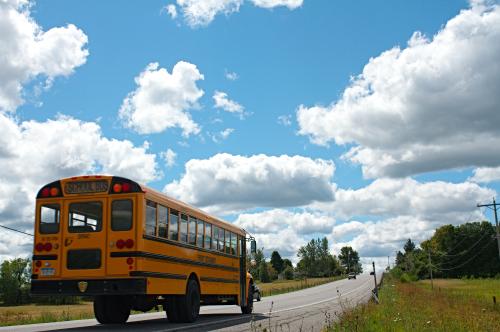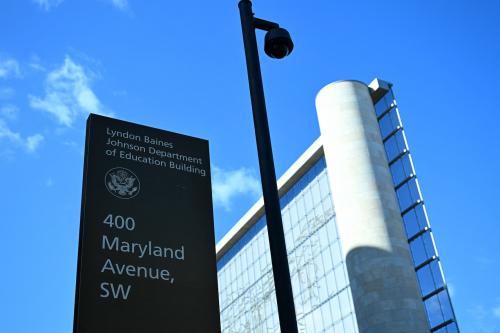Recently Chicago Mayor Rahm Emmanuel announced a controversial new high school graduation requirement for students in Chicago Public Schools (CPS). For the CPS class of 2020 and beyond, to earn a high school degree, students must have a concrete post-high-school plan, as evidenced by having a job or job offer or an acceptance to a college, a trade or “gap year” program, or the military.
The spirit of this policy is in the right place. It is a reasonable expectation that high schools work with students both to meet stated learning standards and to plan for life after secondary school. The true test, however, will be in whether schools can support students to develop solid plans and to be well positioned to follow through after graduation. Given high student-to-counselor ratios and the host of responsibilities often delegated to school counselors, however, students might expect little in the way of personalized guidance. Such realities are fodder for critics of the policy.
For students intending on postsecondary education, our own research has highlighted the distinction between applying, being accepted to, and selecting a college, on the one hand, and actually matriculating to college on the other. At the time of graduation, a key question for students is not only “what are your plans?” but also “how well positioned are you to follow through?” Beyond getting into any college, implicit in the policy is that students have selected an institution that is a good fit for their goals and qualifications, and that they have completed other critical college-going steps, such as applying for financial aid.
Without adequate staff capacity to guide students through these processes, what other possibilities are there? Educational research has long been interested in the power of peer influence and its potential to shape both positive and risky behaviors. Could a peer-based support model be successful in guiding students through the stages of college search, application and selection as well as applying for financial aid?
To explore this question, we recently investigated the impact of the PeerForward program on student success with completing the Free Application for Federal Student Aid (FAFSA), the complex gateway application to postsecondary financial aid. Our focus on FAFSA has substantive and pragmatic motivation. Substantively, without accessing financial aid, higher education would be financially unattainable for many students. Pragmatically, we are able to observe FAFSA filing rates consistently across schools using publically available Federal Student Aid data.
Designed and implemented by the nonprofit organization College Summit, the PeerForward model is predicated on the influence and power of peer leadership. Within participating high schools, the program trains teams of 11th and 12th graders along with an advising school staff member to guide their students through the college-going process. To date, the program has been implemented in 95 high schools in 10 states and in the District of Columbia. PeerForward schools primarily serve students from low-income households and those who would be first in their family to attend college. In these schools, the typical student-to-counselor ratio exceeds 500-to-1.
In this first study of the PeerForward program model, we matched 42 PeerForward schools across eight states to observationally similar schools within the same state. Through this process, we sought to identify schools that looked like those opting to implement the PeerForward model on dimensions such as academic achievement, graduation rates, socio-economic status, school size, racial/ethnic composition, and prior college-going behavior. Specific data elements available for matching varied somewhat across states. Most importantly, given that our key outcome is school-level FAFSA completion rates in the 2016-17 academic year, the PeerForward and matched comparison schools were equivalent on rates of FAFSA filing in the year prior to program implementation.
When we compare PeerForward schools to their matched counterparts, our results indeed suggest promise of activating peer support through college-going processes. Timely FAFSA completion rates were significantly higher in PeerForward schools. For example, by the beginning of March, 35 percent of students in PeerForward schools had completed the FAFSA, compared to 28 percent of students in the matched counterpart schools. Such an increase in successful filing likely translated to increased access to financial aid dollars, and although we aren’t able to examine rates of actual college enrollment, prior research suggests that increased college matriculation is likely to follow.
College Summit identifies two components key to the PeerForward model. First, schools must be able to select students who have the social capital to influence the actions of their fellow students. These are students ideally who have large and varied social networks and who are perceived as leaders within their school community. Second, these students must be effectively trained to navigate their own college-going process while simultaneously influencing their peers to do the same. College Summit trains school staff on the process of selecting student “influencers.” These students then receive training at a four-day intensive workshop to prepare them to run a college-access campaign within their own school. The potential of the PeerForward model is palpable in one student’s reaction to serving in this role: “[I like] the fact that I am able to genuinely help others, because I can directly relate to the stress of being a student which is something teachers and adults have lost touch [with].”
This first step into investigating the impact of the PeerForward model shows promise in terms of FAFSA filing, but more work is needed to understand whether the program is impacting college-going outcomes overall. Nevertheless, this study’s results suggest activation of peer guidance as a strategy for improving college going, especially in settings like CPS where key resources—such as counselors—are already stretched thin. More broadly, it points to the notion that students can affect positive change within their school communities if empowered to do so. Further research is warranted to rigorously assess the impact of PeerForward on college-going steps such as securing college admission as well as financial aid and subsequent college enrollment and success. Moreover, as is found with research on youth summer employment opportunities, there may be added benefits for those youth selected to serve as peer leaders. While by no means a silver bullet, students themselves may be an untapped resource that could help to transform our public schools while also giving voice to those training to step up as a future generation of leaders.
The Brookings Institution is committed to quality, independence, and impact.
We are supported by a diverse array of funders. In line with our values and policies, each Brookings publication represents the sole views of its author(s).








Commentary
Could “With a Little Help from My Friends” become the next college access anthem?
August 18, 2017